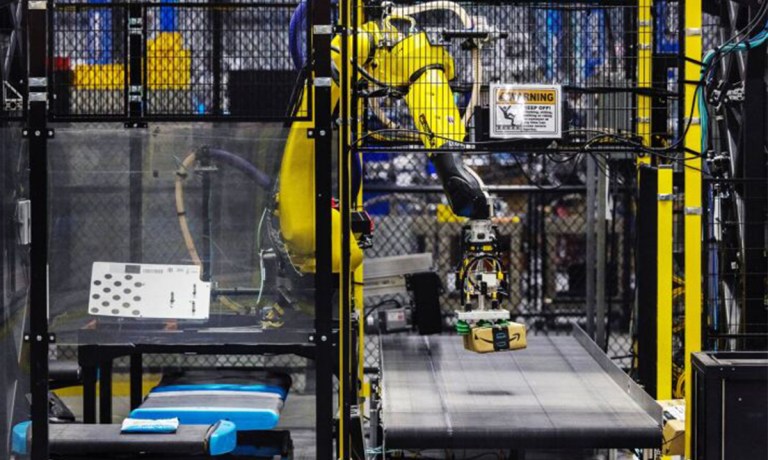
As Amazon seeks to redefine the future of logistics, the company is leveraging robotics to streamline its operations and enhance customer experiences, a process that began with the acquisition of Kiva Systems in 2012.
Amazon has since deployed more than 750,000 robots globally, with its latest fulfillment center in Shreveport, Louisiana, showcasing advanced robotic systems designed to improve efficiency in package delivery.
The goal of these robotics initiatives is to create a safer, more productive work environment for employees while increasing delivery speed. Scott Dresser, vice president of Amazon Robotics, noted this integrated suite of systems is expected to boost productivity by 25% at the new facility.
At the Shreveport center, eight distinct robotic systems collaborate to facilitate package fulfillment. Supported by Amazon Web Services (AWS), these systems use sensors, cameras and machine learning to process large volumes of data, optimizing both robotic performance and employee interactions.
In addition to the Shreveport facility, Amazon is set to open a new robotics-based warehouse at Whole Foods in Plymouth Meeting, Pennsylvania. This facility will use advanced automation technologies to enhance inventory management and streamline operations, improving efficiency in product delivery. The initiative is part of Amazon’s ongoing expansion of its logistics network to better serve customers.
One key system in Shreveport, Sequoia, accelerates inventory management by employing artificial intelligence (AI) and computer vision to identify and store products quickly. It can consolidate inventory up to 75% faster, transporting items directly to ergonomically designed workstations, reducing physical strain on employees.
Hercules, a mobile drive unit, transports pods of items within the center, using a 3D camera for navigation to avoid collisions. Titan is another drive unit that manages larger, bulkier items, further streamlining the order assembly process.
Robotic arm Sparrow assists in order aggregation by moving individual items into totes for packaging. Additionally, Amazon’s packaging automation systems create custom-sized packages from sustainable materials, significantly reducing plastic usage and showcasing the company’s commitment to sustainability.
As packages near shipment, robotic arm Robin sorts and transfers items to the loading area, managing quality control by isolating damaged packages. Another arm, Cardinal, uses AI and computer vision to efficiently select and transfer packages, reducing physical strain on employees.
Proteus, Amazon’s first fully autonomous mobile robot, can navigate freely throughout the fulfillment center, enhancing operational efficiency by facilitating the movement of packages to the loading dock. This mobility enables smoother transitions within the facility, further optimizing the workflow.
Through its expansion into robotics-based warehouses, Amazon aims to enhance operational efficiency and redefine customer experiences with faster delivery and greater order accuracy. These advancements establish the company as a leader in logistics, underscoring the critical role of technology in enhancing customer service and supporting employees, while addressing increasing consumer demands in a safer and more efficient work environment.